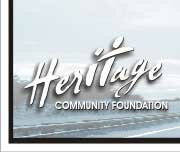
| Home | Search | Sitemap | Help | Contact | Sponsors |
|
|

|

|

|

|
| Home >> Article Database >> Gallopers, Whirligigs, Steam Circuses … Our Carousels |
|
Gallopers, Whirligigs, Steam Circuses … Our Carousels by Maryetta Harper Reprinted from Real Estate Weekly (Edmonton) Carousels have been known by many names. In England they are known as roundabouts, gallopers or tilts; in France as carousels; in Germany as karussels; and in America as flying horses, whirligigs, flying Dutchmen, spinning jinnies, hobby horses, steam circuses, carry-us-alls and, of course, merry-go-rounds. Locally, Johnny J. Jones brought his midway show to the Edmonton Exhibition on several occasions in the 1920s. Research indicates that he presented both C.W. Parker and Philadelphia Toboggan Company (PTC) portable carousels, complete with wooden horses. Although not as grand as the fabulous park-style machines that were found in such permanent amusement parks as Coney Island, New York, the smaller portable carousels, with their accompanying band organ “calliope” music, nevertheless brought their own special excitement to the communities that they visited. It has been estimated that there are perhaps fewer than 150 original antique carousels in working condition in the world today. Due to their scarcity their costs start at around a half million dollars, felt to be out of reach for Fort Edmonton Park. As a result, the 1920s Midway and Exhibition Committee is recommending the installation of a small, restored carousel with newly carved and painted horses as the main attraction for the proposed Fort Edmonton Park midway. The carousel, probably 28 to 32 feet in diameter, will likely be a two-row machine containing 18 to 24 horses in total, with up to two chariots, depending on the number of horses chosen. The real charm of the carousel is in its individually carved wooden horses. With manes flying, eyes dancing and feet prancing, carousel horses have spelled excitement and adventure for young and old alike for well over a century. Beneath their gaudy paint and glittering jewels, the horses (along with other carousel figures known as menagerie animals) are nothing less than works of art. They are created by master craftsmen who painstakingly carve every rippling muscle, prancing hoof and alertly cocked ear. The fanciest of the class have elaborately carved trappings; decorations ranging from garlands of flowers to hunted game. Each horse is made from 30 to 40 blocks of basswood blocked up and carved just as they were in the old days. Epoxy holds the pieces together. The ponies are painted with automotive acrylics and given a triple glaze finish to withstand years of hard riding. Some of them have “real” tails. The average horse takes about 250 hours to carve and another 40 hours to paint. The horses can be carved to individual tastes. They may be named, and are believed by many to have “souls.” Carousel animals are produced in various sizes graduating from the smallest on the inside row to the largest on the outside. Horses with at least three feet resting on the platform are called “standing figures.” Outside row standers are the most elaborately and intricately carved horses and are therefore the most prized. They are the largest horses, usually measuring approximately 60 inches from nose to tail and approximately 60 inches in height. Horses with two back feet on the platform and front legs posed in the air are called prancers; they are usually found on the inner rows. Jumping horses, distinguished by their four bent legs, which never touch the platform, are the horses that move up and down. Traditionally, only the side of the horse that faces the outside of the carousel is heavily detailed and ornamented. This is referred to as the “romance” side. Chariots used on carousels were also known as gondolas, boats, cabs and swing bodies. Most often they were fastened to the carousel and their main use was for those either too young or too old to mount a horse. Some chariots were simply covered benches with only the outward sideboard carved, the inner cut to follow the outward contour. Carved in relief, the themes ranged from St. George’s dragon to characters from children’s books. The upper decorative outside parts of the carousel, referred to by some manufacturers as “crestings,” are also called rims, cornices or shields. In England, they are known as “rounding boards.” Some had carved frames surrounding mirrors or painted panels whose subjects varied from the sublime to the ridiculous. While some were painted by skilled artists, others were quite naive. To help finance the cost of the proposed Fort Edmonton carousel, the major portion of which covers the carving and painting of the animals, the committee anticipates “adopting out” ponies. Buyers can become a proud “owner” of a pony for one year. Even school children can save their pennies for the ponies! As well, eight to ten panels on rounding boards can be sold for advertising. Maryetta Harper is a member of the 1920s Midway and Exhibition Committee of the Fort Edmonton Historical Society. Real Estate Weekly is published by the Edmonton Real Estate Board to advertise properties for sale through member agencies. Each issue contains at least one, often several, articles on heritage buildings and issues in Edmonton and district. |




